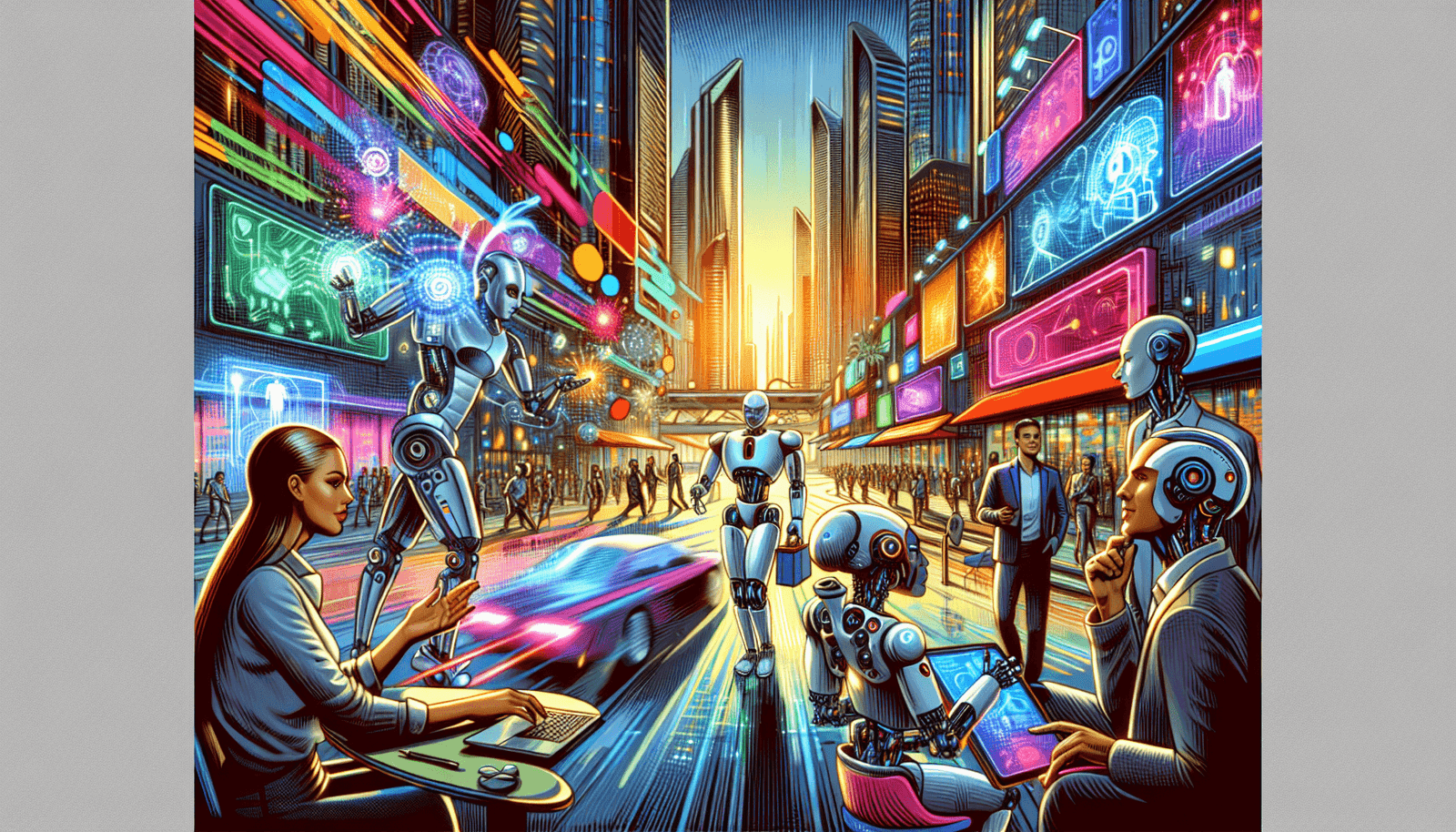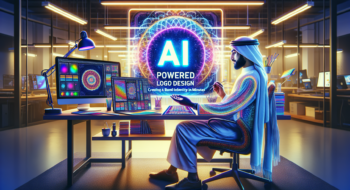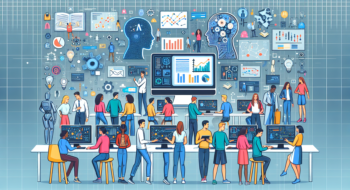The Future of Automation: Trends and Predictions
Welcome, dear readers! Today, we embark on a journey into the fantastical realm of automation—a space where ingenuity meets inevitability. Imagine, if you will, a world where tasks are executed with the precision of a Swiss watch and the drudgery of manual work evaporates like morning dew under a sunbeam. Let’s dive into the trends and predictions that will shape this exhilarating future ahead of us.
Ubiquitous AI Integration
First off, let’s talk about Artificial Intelligence (AI). No longer just a quirky term tossed around by tech enthusiasts, AI is steadily cementing its role as the backbone of automation technologies. Picture this: machines so savvy and adaptive that they can think for themselves! By seamlessly integrating AI into automation, we’re about to unlock levels of efficiency and responsiveness previously confined to the realms of science fiction. I mean, if you’ve got smart supply chains in manufacturing and tailored educational experiences in classrooms—tell me, are we not the architects of our own future?
Robotic Process Automation (RPA) Expansion
Now, let’s sprinkle some magic into the mix with Robotic Process Automation (RPA). This isn’t just your run-of-the-mill automation; we’re talking about robots taking over the mundane while humans focus on creativity and strategy. It’s already been a game-changer, saving time and minimizing errors in repetitive tasks. Tools like UiPath and Microsoft’s Power Automate are paving the way for businesses looking to streamline processes and reshape digital landscapes. Don’t be shocked when RPA dives deep into more complex territories like customer service and yes, even creative tasks! Imagine robots spinning compelling narratives as effortlessly as they crunch numbers. Exciting, isn’t it?
Human-Machine Collaboration
But wait just a moment! Before you start thinking that robots will snatch our jobs away, let’s reconsider this narrative. The future is about symbiosis—humans and machines collaborating like an impeccable duet. Augmented intelligence—where human expertise interlaces with AI prowess—will enable you to focus on high-value tasks while automated systems handle repetitive chores. It’s a partnership, folks, and one that promises to elevate job satisfaction and unleash creativity like a butterfly from its cocoon!
Internet of Things (IoT) Integration
Next on our list is the Internet of Things (IoT), the puppet master of interconnected devices. As we segue into the future, expect IoT technologies to seamlessly merge with automation solutions. This symphony will create smarter ecosystems that respond to real-time data and facilitate decision-making processes worthy of admiration. Imagine sensors on your farm that monitor soil moisture, temperature, and more, automating irrigation systems to boost crop yields. It’s not just a vision; it’s the new agricultural reality!
Hyperautomation
Now let’s get futuristic with a trend called Hyperautomation. This concept elevates automation to an art form, combining AI, machine learning, and advanced analytics to automate intricate business processes from start to finish. Ever wondered how companies can gain deeper insights and predict trends like a crystal ball? Hyperautomation is your answer! According to Forrester Research, it can lead to a 30% increase in efficiency and a 20% productivity boost. If that’s not worth cheering for, I don’t know what is!
Edge Computing for Real-Time Processing
Here’s another thrilling development: Edge Computing. Think of it as having a local assistant who processes information right at the source rather than having to send everything to the main office first. This innovation is a revelation for automation, enabling real-time responses that are not just quick but also insightful. Picture manufacturing plants and healthcare systems thriving on rapidly processed data, all thanks to this revolutionary approach. It’s a win-win situation!
Ethical and Responsible Automation
As we gallivant into this incredible future, let’s hit the brakes and address something crucial: ethics. With great power comes great responsibility, my friends. The advancement of automation technologies brings to light significant ethical challenges—data privacy, potential biases, and job displacement. So, companies will have to be transparent, fair, and accountable, ensuring that technology doesn’t just serve them but serves society as well. Ethical automation could very well be the golden ticket to winning consumer trust.
The Rise of Digital Twins
Next, let’s explore the fascinating world of Digital Twins—virtual replicas of real-world systems. Whether in manufacturing, urban planning, or healthcare, digital twins offer a peek into the future, allowing us to simulate, analyze, and optimize like never before. Armed with real-time data, these virtual marvels supply actionable insights that drive better decision-making. The day digital twins become a standard tool, we’ll look back and wonder how we ever operated without them!
Democratization of Automation
And here comes the cherry on top: the democratization of automation! As tools become more intuitive and accessible, the barriers to automation will fall faster than autumn leaves. No longer the domain of tech wizards, automation will be available to a broader audience, sparking innovation and competition. You don’t need a PhD in computer science to whip up automation solutions anymore; no-code and low-code platforms will allow everyday people to create their own systems. This is huge for small businesses and entrepreneurs!
Autonomous Everything
Finally, let’s peep into a world of autonomous everything! Forget self-driving cars; we’re talking about autonomous drones for logistics, robots managing crops, and even floating farms. As these innovations surge forward, not only will efficiency rise but so will our capacity to tackle critical issues like sustainability and food security. It’s wild out there, and the journey has only just begun!
Reducing Errors and Enhancing Quality
Last, but certainly not least, consider how AI is not just speeding things up but is laying down a foundation for quality. Gartner claims that AI can slice errors in repetitive tasks by a staggering 70%. For sectors like banking and finance, this is nothing short of transformational. Think of how beautifully streamlined operations can become when precision reigns supreme!
Conclusion
So, dear readers, as we gaze into the crystal ball of automation, we see an incredibly bright future textured with promise. By embracing the tides of change—AI integration, RPA, human-machine collaboration, IoT, and all from edge computing to ethical considerations—we can harness the full spectrum of automation to drive ourselves toward innovation, efficiency, and sustainability.
As we navigate this transformative journey, let’s remain agile, adaptable, and mindful of the ethical implications, ensuring technology becomes a harbinger of positive change in our society.
Want to stay in the loop about the latest news in neural networks and automation? Check out our other popular articles!







